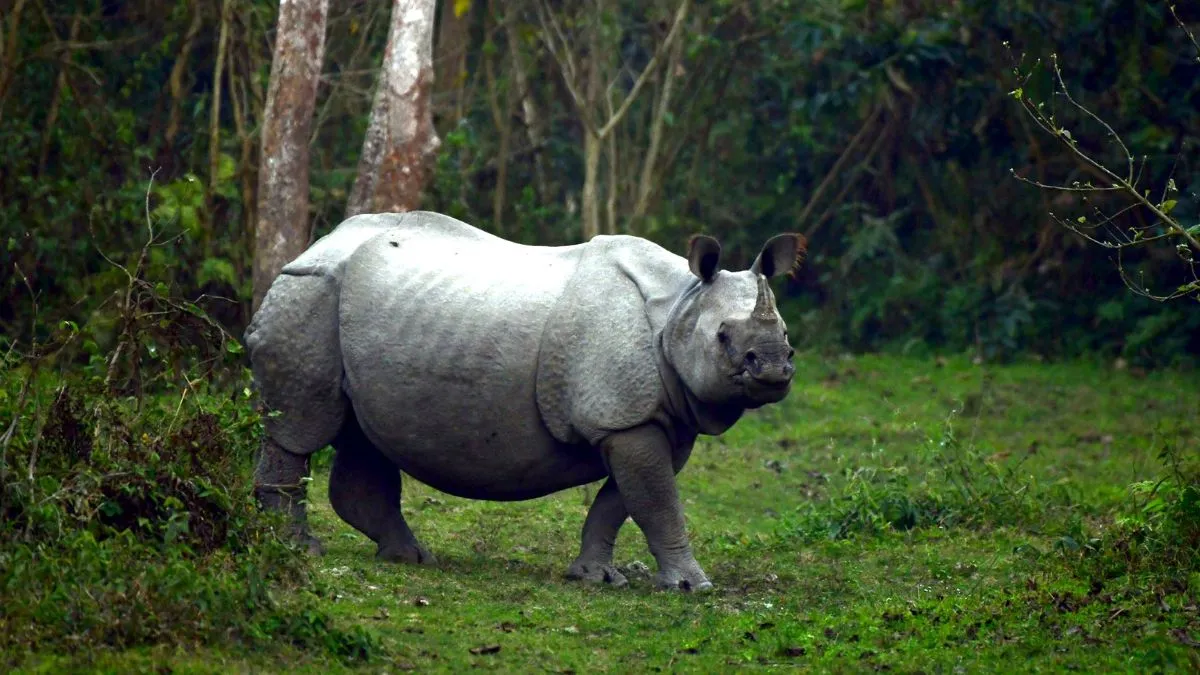Kaziranga Nationwide Park, a UNESCO World Heritage Website, is famend for its numerous wildlife, particularly its iconic one-horned rhinoceros inhabitants. Annually, the park closes its doorways to vacationers from Might to October because of the monsoon season and the chance of flooding from the mighty Brahmaputra River. The park’s fragile ecosystem is susceptible to those annual floods, which frequently lead to tragic animal casualties. This 12 months, the floods have already taken the lives of 215 animals, together with 13 one-horned rhinos.
The Devastating Influence of Floods on Kaziranga Nationwide Park
The Brahmaputra River, with its annual floods, performs a major position in shaping the panorama of Assam and, particularly, Kaziranga Nationwide Park. Whereas these floods contribute to the fertility of the area, additionally they pose a risk to the wildlife that inhabits the park.
Wildlife Casualties and Conservation Efforts
The latest floods have claimed the lives of 215 animals, a heart-wrenching loss for the park’s already threatened species. The lack of 13 one-horned rhinos is especially regarding, as this species faces ongoing threats from poaching and habitat loss.
Conservation efforts are in full swing, with the park authorities monitoring the state of affairs carefully and using measures to mitigate the influence of floods. Rescue groups are on standby, and the park’s workers is working tirelessly to safe the security of animals and reduce additional casualties.
Reopening and Tourism
Regardless of the difficult state of affairs, Kaziranga Nationwide Park is ready to reopen for vacationers on October 1, 2024, permitting guests to expertise the park’s unbelievable wildlife and breathtaking landscapes.
Restricted Entry and Security Precautions
Whereas the park will reopen, the entry will probably be restricted to sure ranges. The present plan permits jeep safaris in three particular ranges, specifically, Kaziranga Vary, Kohora; Western Vary, Bagori; and Burapahar Vary, Ghorakati. This determination displays the authorities’ concern for customer security and their dedication to make sure that the park stays secure for each vacationers and animals.
The park authorities are taking precautions to make sure the security of holiday makers by proscribing entry to areas which can be nonetheless susceptible as a consequence of latest floods.
Lengthy-Time period Conservation Efforts and Challenges
The challenges posed by flooding and different environmental elements underscore the necessity for complete conservation methods.
The Want for Adaptive Conservation Approaches
The park’s future hinges on the profitable implementation of sustainable conservation practices that adapt to the altering setting and reduce the unfavorable influence of floods.
Ongoing Threats to Wildlife
The one-horned rhino is just not the one species dealing with threats inside Kaziranga. Different animals like hog deer, swamp deer, and wild pigs additionally suffered important losses through the latest floods. Defending these numerous species necessitates steady conservation efforts, analysis, and useful resource administration.
Take Away Factors
The annual flood season presents important challenges for Kaziranga Nationwide Park and its numerous wildlife. The tragic lack of lives, notably that of one-horned rhinos, highlights the urgency for ongoing conservation efforts and emphasizes the significance of adaptive conservation methods.
- Floods pose a major risk to Kaziranga Nationwide Park’s fragile ecosystem and the wildlife that inhabit it.
- The latest floods have claimed the lives of 215 animals, together with 13 one-horned rhinos, highlighting the urgency for ongoing conservation efforts.
- The park’s reopening on October 1, 2024, will permit vacationers to expertise its wildlife however with restricted entry as a consequence of ongoing flood restoration efforts.
- The park authorities are prioritizing the security of each vacationers and animals by implementing security measures and proscribing entry to sure areas.
- Lengthy-term conservation methods are vital to mitigate the influence of floods and make sure the safety of the park’s numerous wildlife.




